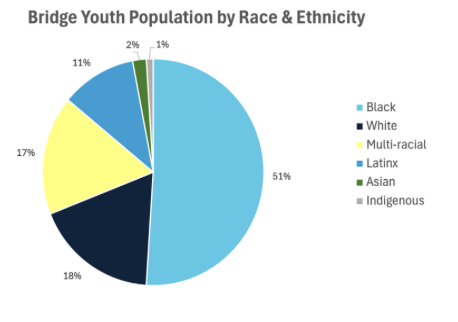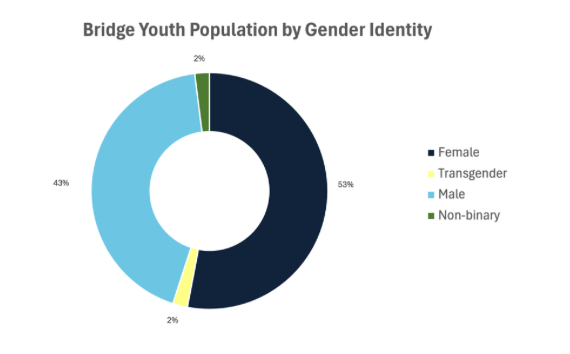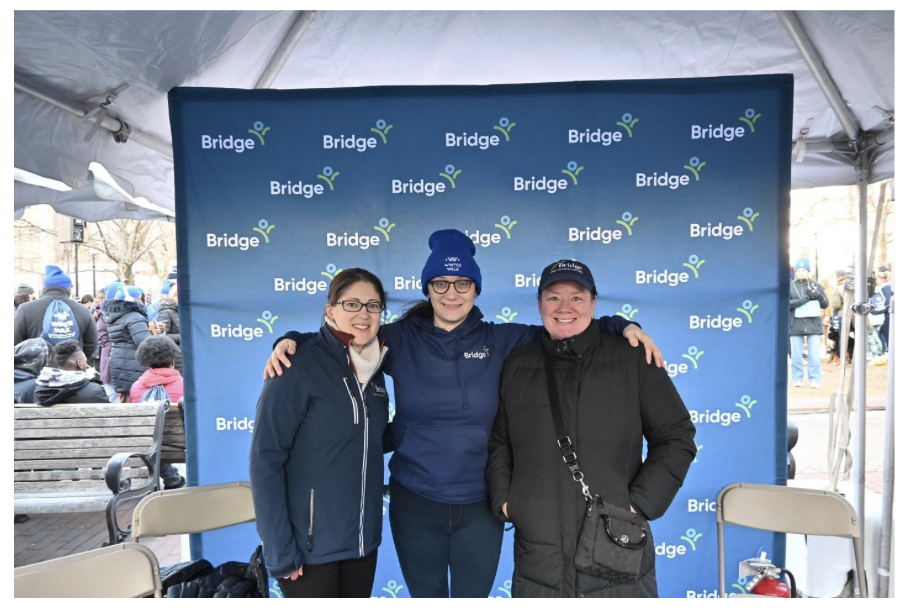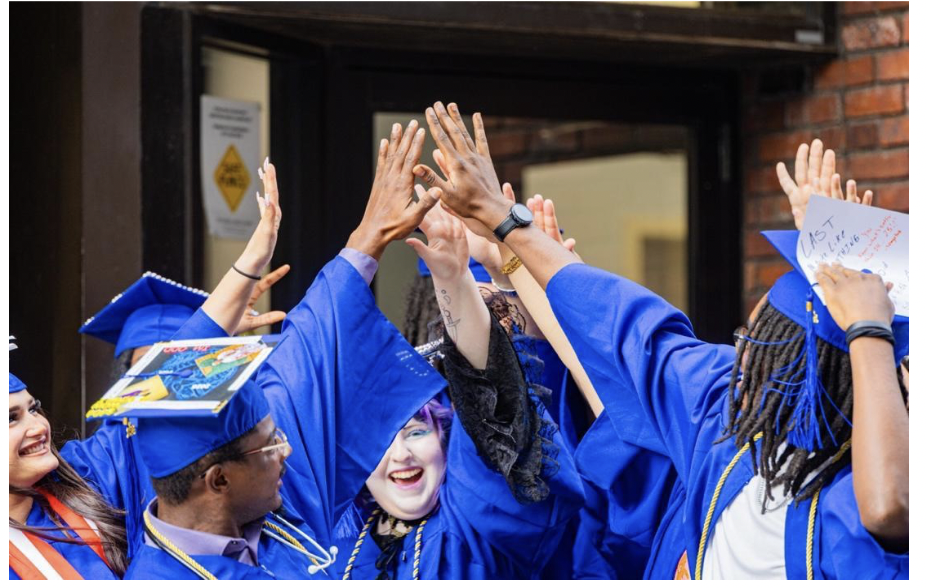Ending Homelessness with Bridge Over Troubled Waters, Boston
“No teenager should be worried about finding a place to sleep or finding enough food to eat. Instead, they should be focused on school, friends and having a good time.”
Welcome to one of our original organizational partners, who’s been with Winter Walk since our very first Walk event in 2017!
For anyone who hasn’t heard about your incredible work before, can you tell us about your organization?
Bridge Over Troubled Waters (Bridge) provides effective and innovative services to run-away, homeless, and high-risk youth. We help youth avoid a lifetime of dependency on social services, guide youth towards self-sufficiency, and enable youth to transform their lives and build fulfilling, meaningful futures.
The impact of unstable housing on youth is clear; homeless youth are unlikely to finish school, stay employed, or afford safe and secure housing. Yet this stage of life is a critical opportunity for life-changing intervention. Young people experiencing homelessness need consistent support and safe, affordable housing to move toward self-sufficiency. Bridge meets youth at every stage of this journey: from short-term survival aid services such as street outreach, drop-in hours for daily needs, and medical care, to long-term, life-skill-building residential programming that includes supportive and transitional housing.
At every point along this continuum of care, youth have access to counseling, education, educational opportunities, career services, and financial literacy training at our easily accessible downtown Boston location, 47 West Street, just across from the Boston Common.
Who does Bridge serve?
Every year in Boston, Bridge works with approximately 2,000 youth between the ages of 14 and 24, representing diverse racial, ethnic, gender, and sexual identity backgrounds – as illustrated in the figures below.
[Alt text: a pie chart displays the racial and ethnic composition of Bridge’s youth population. The segments are: Black 51%, White 18%, Multi-racial 17%, Latinx 11%, Asian 2%, and Indigenous 1%.]
[Alt text: A donut graph shows the breakdown of Bridge’s youth population by gender identity. It reads: Female 53%, Male 43%, Transgender 2%, and Non-binary 2%]
[Alt text: a bar graph shows the breakdown of Bridge’s youth population by sexual identity. It reads: 20% LGBTQ+ and 80% non-LGBTQ+]
Bridge is Boston's sole provider that delivers a full continuum of care, a comprehensive, wraparound support system, to this distinct population. We effectively engage, stabilize, and guide young people towards a secure future through trauma-informed care, a positive youth development approach, and a deep understanding of the complex interplay between youth developmental stages, trauma, mental health, and homelessness.
There are 3 main drivers of Bridge’s work:
The knowledge that homeless youth need support in all aspects of human development to make up for years of missing crucial life skills.
The belief that changing a young person’s trajectory from living on the streets to a stable, healthy, and productive life is immeasurable.
The familiarity that the cost of missing this window is far too high to ignore for our community and, most importantly, for each youth who comes to Bridge.
We were so thrilled to present you with a check for $39,554 this year, and congratulations on such a successful Winter Walk! How are you using the funds raised this year?
Funds raised during the Winter Walk in February allow us to meet youth where they are at and provide targeted services. These include the mobile medical van, which travels around the city to engage youth and share information about Bridge; the weekday drop-in center, where youth can take a shower, eat a hot meal and receive clean clothes; the education and career center, where youth can reengage in education and gain skills to secure employment; and the youth engagement center, which provides individualized counseling and support.
Staff and guests from Bridge pose for a photo at the 2025 Winter Walk. (((credit: courtesy of Bridge)))
[Alt text: three people stand huddled together in front of a banner with the “Bridge” logo on it. They are outdoors, wearing full winter gear and smiling brightly. People are seen gathered in the distance waiting to start the walk.]
We’ve all read the headlines that homelessness is increasing both nationally and here in Boston. There have been significant increases in homelessness among families and unaccompanied youth, with children under 18 experiencing the largest single-year increase in 2025. What are the greatest needs your organization has as you provide services to this community?
The demand for our services is greater than ever. Over the past year, Bridge has seen more than a 30% increase in youth served through the Welcome Center, our overnight program. Our most urgent need is to meet the basic needs – food, clothing and shelter - of runaway, homeless, and at-risk youth food, shelter, clothing. While also providing access to support services like counseling, education, and job training. Also crucial are access to mental and physical healthcare, legal and medical services, trauma-informed care, and positive youth development strategies.
What is something you wish everyone understood about homelessness?
Through no fault of their own, youth experiencing homelessness are hiding in plain sight. You know them. They are bagging your groceries or sitting next to you in class. They may even be couch-surfing at friends’ houses, but that hospitality can wear out quickly. No teenager should be worried about finding a place to sleep or finding enough food to eat. Instead, they should be focused on school, friends, and having a good time.
What is something you wish everyone knew about unhoused people?
Youth experiencing homelessness need hope, opportunity, and caring adults in their lives.
At Bridge, our model works because we know that with the right support and a commonsense approach, young people can move toward stability and independence. We’ve seen time and again how successful youth can be when given the right support, and one story that stands out is Bruce’s. He came to Bridge at 16 with no family support and stayed in our Basic Center for underage youth. From there, he moved through our entire program: from our Emergency Residence to our Transitional Living Program, and finally to our independent resident, Liberty House. While at Bridge, Bruce graduated from Boston University and went on to earn his master’s degree in computer science from Northeastern.
Some of the 28 youths at Bridge celebrate their 2025 graduation from the HiSET (High School Equivalency Test) and High School diploma/certificate programs. (((Credit: https://bridgeotw.org/news-events/graduation-2025/))
[Alt text: a group of students wearing blue robes and customized graduation caps and smiling brightly while high-fiving each other]
It's amazing what a little bit of support can do for someone. Congratulations Bruce! Are there any other stories you’d like to share about the impact Bridge has had on its youth’s lives?
We’d love to share an example of our impact through Darai’s story. The following is in their own words on their experience with Bridge:
“The first time I came to Bridge, I walked right by…and the second time …and the third time…and probably the fourth time. Many of those times, there was a man in the lobby who smiled and waved at me through the window – and I waved back, but I still didn’t walk through the door. Trying to figure out adulthood after I turned 18, I ended up in many unsafe living arrangements in different cities, and I had been in significantly unhealthy relationships. I was struggling with the day-to-day and lacked the resources and support I needed. I knew who I wanted to be, but there were just too many obstacles. I was told to come to Bridge for help, but I wasn’t sure I wanted to. I thought it was just shelter, and I really didn’t want to end up in a shelter. But I knew I needed to do something, or I was never going to get out of this spiral. So, I finally walked through the door at Bridge. I quickly learned that Bridge was much more than a shelter. It’s a welcoming place where there are many other young adults like me who are here for the right reasons. I learned about Bridge’s Emergency Residence Program. It was for young adults who needed a place to live. To be eligible for the program, I needed to get a job as well as start therapy. I soon found a job working security in the Seaport. In therapy, I have found out that a second opinion can be a good thing. I have learned how to make sure I take care of myself. When a bed opened, I was ready to knock it out of the park! And now, I live in Bridge’s Brunson Liberty House. This is where I will truly learn to be independent. It is an opportunity to explore careers, to work on my credit, and to go back to school. I have been saving my money and opened my first 401K retirement fund! I want to become a chiropractor because once I can take care of myself, I know I will always want to heal others. I have also learned the world might never be perfect, but as long as we work together, we can be imperfectly perfect.”
How can people help Bridge Over Troubled Waters?
There are many ways to get involved with Bridge; some methods we want to highlight are.
Monthly Giving: become a Bridge Builder as a monthly donor and provide steady, generous, and reliable support for Bridge’s ongoing programming and help us respond to emergency needs.
Matching Gifts: Many employers have a matching gift program and will match your donation, some up to 100%. Find out if your company participates.
Get Involved: Sponsor a third-party event or drive with proceeds or items donated to Bridge.
Follow and Like on social media.






